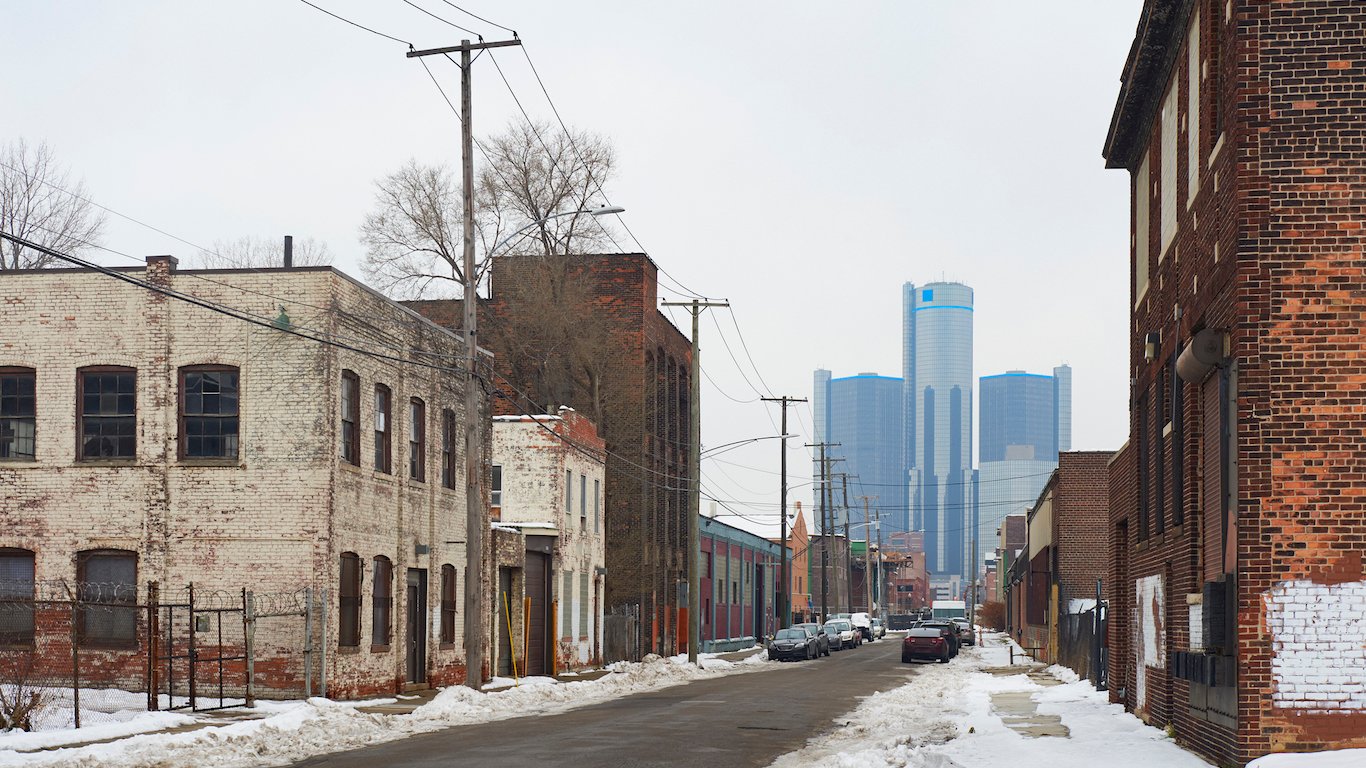Economy
Rebuilding the Employment Security System for the Rust Belt That Created It

Published:
Last Updated:

By John C. Austin and Richard Kazis of the Metropolitan Policy Program at the Brookings Institution
Industrial transformation, brought on by global trade, new digital technologies, and changes in the structure of work, have hit Rust Belt communities hard. Some places, such as Pittsburgh and Kalamazoo, have gone through painful transitions and come out the other side. However, the majority of the Rust Belt’s older industrial cities continue to struggle with job loss and weak economic growth.
The collapse of the region’s labor-intensive manufacturing-based economy took its toll on the employment-based safety net protections that Midwestern employers and unions forged after World War II. Today, employer-based systems of health insurance, pensions, and unemployment insurance serve fewer and fewer Midwestern workers.
For Rust Belt workers and communities today and in the future, economic security policies must become more flexible and suited to a fast-changing economy. This will require balancing support for technological innovation with concerted efforts to reduce the costs of dislocation for people and places bearing the brunt of change.
The Midwest Built America’s Employment-Based Security System
In the years following World War II, the manufacturing industries of the industrial Midwest, together with their unions, hammered out a set of economic rules and policies that became the foundation for America’s subsequent economic prosperity and security.
Wage controls imposed during World War II set the stage for this system. Unable to increase worker pay, employers began to offer pensions and health insurance to attract and retain workers. The federal government assisted by exempting health insurance benefits from taxation for companies and individuals.
The transformation accelerated in the wake of the 1950 General Motors-United Auto Workers contract. Dubbed the “Treaty of Detroit,” it traded labor peace for wage gains based on productivity and cost-of-living increases. Large employers shared prosperity with their workers by providing them with health insurance, pensions, and other benefits. State and federal unemployment insurance policies that took shape during the Great Depression worked well for an economy in which periodic layoffs were temporary and skills were fairly transferable from one labor-intensive manufacturing sector to another.
The resulting system spread across the nation, in both union and non-union settings. The percentage of Americans covered by private pensions jumped from 3.7 million in 1940 to 19 million in 1960—nearly 30 percent of the labor force. By 1975, 40 million Americans were covered by private pension plans. The pattern of employer-provided health insurance coverage forged in Midwest industries became almost universal, rising from 10 percent in 1940 to just under 30 percent in 1946, reaching 80 percent of all workers by 1964.
Public sector employment systems, too, began to copy the agreements negotiated in the region’s private industries. In 1951, Wisconsin created the nation’s first stable statewide pension system for public employees and became the first state to allow public workers to participate in Social Security. Other states soon followed suit.
The Midwest’s Economic Decline Eroded Employment-Based Economic Security
By the 1970s, global competition facilitated by technology-based innovations in communications and transportation began to challenge U.S. manufacturing dominance—and the employment-based safety net that had matured with it. In successive waves of industrial restructuring, employers shuttered inefficient factories, moved production to cheaper locales, automated where possible, and pushed costs and risks onto employees and suppliers.
Thank you for reading! Have some feedback for us?
Contact the 24/7 Wall St. editorial team.